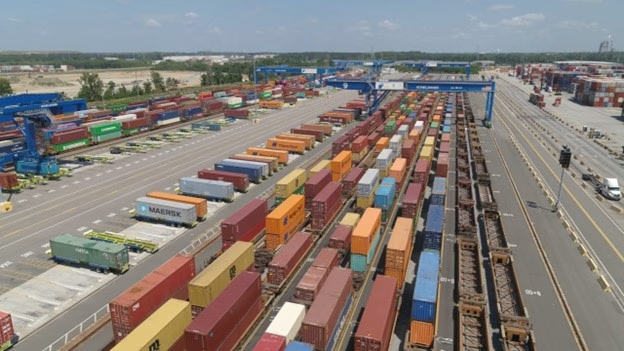In the dusty plains near I-80 and 7200 West, excavators are pulling up more than just soil—they’re digging into layers of decades-old trash at the former Salt Lake Valley landfill as the Utah Inland Port Project firges ahead. This site is now at the center of the ambitious Utah Inland Port project, one of the largest economic development efforts in the state’s history. The goal: turn a former dumpsite into a $200 million transportation and logistics hub that will move goods by road, rail, and air—bypassing coastal ports and accelerating regional trade.
A Hazardous Cleanup Begins
On Wednesday, crews broke ground on the Utah Inland Port project, launching a remediation effort expected to span seven years. The process is fraught with environmental risks. Decomposing waste emits gases, some of which could pose health hazards if they seep into future buildings. “You don’t want those gases to migrate into structures,” explained Gary McEntee of Ninigret Management, the firm leading the landfill cleanup. Layers of waste from different decades—especially the plastic-heavy 1970s—make the job more difficult as they dig deeper west.

1 million square-foot Inland Port distribution centre begins construction, Kansas
Balancing Economic Promise and Environmental Risk
Despite its promise of thousands of new jobs and hundreds of millions in economic gains, the Utah Inland Port project has sparked significant controversy. Since it was proposed in 2018, it has faced protests, lawsuits, and pushback from environmental groups concerned about the shrinking Great Salt Lake and worsening air quality. Deeda Seed of the Stop the Polluting Port Coalition expressed concern about the true intent of the project. “Remediating the landfill isn’t bad. But using it to fast-track industrial development is the issue,” she said.
Officials argue that the project will ultimately help protect the lake by preventing unregulated sprawl and investing in sustainable infrastructure. “If we continued to do nothing, that’s when the lake suffers,” said Abby Osborne, chair of the Utah Inland Port Authority. “The best way to protect it is to manage this development carefully.”
Communities Caught in the Middle
Salt Lake City Council member Victoria Petro, who represents nearby neighborhoods, says the community is split. “My constituents are concerned about both air quality and job opportunities,” she said. The Utah Inland Port project could offer new economic mobility for blue-collar workers—if it’s done responsibly.
As backhoes dig and plans take shape, one thing is clear: Utah’s inland future is being built on the remains of its past.

